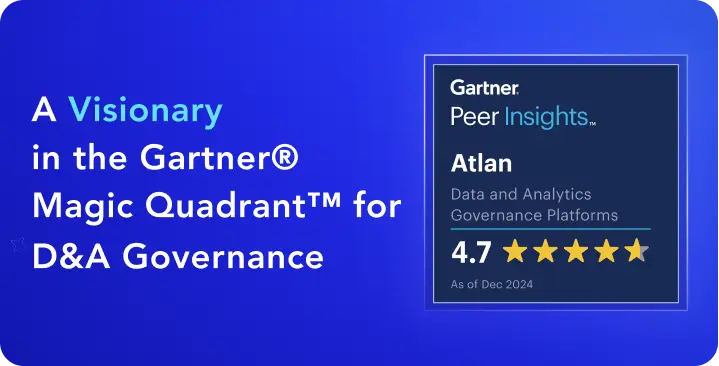Apache Iceberg’s benefits include ACID transaction support, point-in-time queries, and pluggable catalogs, among other things. Its adoption has been rising as it addresses many key issues data engineering teams faced while using Apache Hive.
This article will take you through the key benefits of adopting Apache Iceberg into your data ecosystem, especially if you are building a data lake or a data lakehouse. We’ll also look at the challenges with Apache Hive that led to the rise of projects like Apache Iceberg.
Table of Contents #
- Apache Iceberg benefits: An overview
- 4 fundamental issues with Apache Hive
- 6 Apache Iceberg benefits for large-scale analytics
- Enhancing Apache Iceberg benefits with a metadata control plane
- Apache Iceberg benefits: Wrapping up
- FAQs on the benefits of Apache Iceberg
Apache Iceberg benefits: An overview #
In the early 2010s, Apache Hive was extremely popular and widely used as the metadata store and query engine on top of Hadoop ecosystems.
However, with the scale and workload demands of large technology-first companies like Uber, Netflix, Lyft, Airbnb, and Spotify, Hive wasn’t an option anymore. That’s why projects like Apache Iceberg came into the picture.
Over the last few years, Apache Iceberg has been widely adopted as a foundational component for building data lakehouses for large-scale analytics.
To understand the benefits of Apache Iceberg, you’ll first need to get the background on the problems Apache Hive-centric architectures faced.
4 fundamental issues with Apache Hive #
Hive was created by Facebook back in 2008 as a data warehousing system on top of Apache Hadoop. This project was later open-sourced in 2010 as a top-level Apache project. Hive saw great adoption early on, but as the data engineering workloads scaled, it had many critical issues.
Some of the key issues with Apache Hive were as follows:
- Lack of ACID transactions support: With the evolving needs of large-scale analytics teams, Hive needed ACID support, but it didn’t have that. Even the latest version only supports transactions in a very limited way.
- The small file problem: One of the nasty problems that engineers faced was the partitioning implementation in Hive, which resulted in a large number of small files that needed to be sorted and pruned to get to the data.
- Expensive updates and deletes: Updates to existing rows and deletes were expensive in Hive because they weren’t executed in-place. Rather, they were executed using Delta writes, which resulted in a bloated delta log. Also, even if you were to write one row, the whole partition containing that row would need to be rewritten.
- Manual schema evolution: Hive didn’t have the wherewithal to support automatic schema evolution. It also didn’t support schema versioning, time travel and rollback, or data validation checks.
These were some of the key issues that led to the development of Apache Iceberg. Let’s now examine how these issues were resolved and the benefits of using Apache Iceberg.
6 Apache Iceberg benefits for large-scale analytics #
Apache Iceberg is one of the few table formats that has come up as a viable alternative to Apache Hive because of its features. The six key Apache Iceberg benefits are that it:
- Integrates with open data architecture stacks and patterns
- Supports data lakehouse architecture pattern
- Allows fast-changing data environments
- Enables faster queries because of hidden partitioning and pruning
- Provides a consistent data reading and writing experience
- Helps build governance and lineage with the metadata
1. Integrates with open data architecture stacks and patterns #
One of the emerging architecture patterns in data platforms is to adopt open standards for storage and processing data as much as possible. This is to prevent any hard lock-ins for an organization.
Apache Iceberg supports open data architecture in several ways, allowing an entire ecosystem of tools to spring up. Some of the ways in which Iceberg facilitates open data architecture stacks and patterns are as follows:
- Open table format: Iceberg is an open table format with versioned table specifications.
- Query engine agnostic: You’re not tied to a specific query engine when using Apache Iceberg.
- Support for open file formats: Iceberg supports Parquet, Avro, and ORC, the three major open file formats for row-based and column-based storage.
- Pluggable catalogs: Iceberg allows flexibility with where and how you want Iceberg to store and manage the metadata of your Iceberg assets.
Let’s now look at how Iceberg enables data lakehouse architecture.
2. Supports data lakehouse architecture pattern #
One of the major benefits of Apache Iceberg is that it has all the ingredients to support the data lakehouse architecture pattern, which brings aspects of both data warehouses and data lakes together.
Some of the features of Iceberg that allow it to do so are:
- Support for ACID transactions for enabling data warehousing features
- Consistency for readers and writers using snapshots
- Support for multiple file formats to be used based on workload type
- One table format from source to target to minimize external data movement
- Support for multiple query engines based on the use case
In addition to supporting lakehouse architecture, you also need to support the speed at which data source systems and their integrations change, which is the Apache Iceberg benefit.
3. Allows fast-changing data environments #
Traditional data warehouses and data lakes suffered from the problem of rigidity of data models, where changing a downstream table would usually take days, sometimes even weeks.
Organizations cannot afford to spend that much time on handling such changes anymore, which is why Iceberg has an edge here with these features:
- Schema evolution: Allows you to apply changes at the column level without impacting the whole table – you can add, drop, or rename a column without rewriting the whole table.
- Partition evolution: Allows you to change partition strategies for your data without rewriting partitions, while also preserving older partitioning logic.
- Time-travel and rollback: Allows you to go back to an older version of data and restore it in case of any mess ups while incorporating changes.
Another Apache Iceberg benefit from partition evolution is faster querying. Let’s explore further.
4. Enables faster queries because of hidden partitioning and pruning #
When it comes to query optimization, one of the pain points has traditionally been the ability of any individual to read query plans while understanding the internal goings on of a query optimizer.
Iceberg has given users a superpower by abstracting away partitioning logic using hidden partitioning.
Hidden partitioning automatically selects the right partition for you based on your query. You don’t have to explicitly mention the column’s name with a partition name or partition value. Iceberg automagically does that for you.
Moreover, Iceberg uses partition pruning to reject the partitions your query doesn’t need.
5. Provides a consistent data reading and writing experience #
A key requirement of a data lakehouse is that it should always have data available for readers, even when write workloads are in progress.
Apache Iceberg’s snapshot isolation always provides readers with a consistent view of a table and prevents dirty reads. With atomic operations, it also ensures that there are no partial updates visible to readers.
Writers, on the other hand, work on their copy of the data in the form of a snapshot, which they commit data to atomically. Writes to the same row of data are resolved using optimistic concurrency control.
Combining the features above provides a clean, consistent, and reliable reading and writing experience with Iceberg.
6. Helps build governance and lineage with the metadata #
Finally, Iceberg also lays the foundation for storing and maintaining the metadata for Iceberg assets. This metadata enables several features that are critical for implementing a fuller governance experience for an organization.
Some of these features are listed below:
- Extensive auditing capabilities using snapshots
- Git-like semantics for branching and tagging data assets and their versions
- Partition and schema evolution for historical context and lineage
- Pluggable Iceberg catalog for greater flexibility and integration with other tools
The above Apache Iceberg benefits provide a major edge over some other formats, especially Apache Hive.
However, Iceberg doesn’t fulfill the need for a business catalog, data dictionary, or data governance tool. For that, you need a control plane for metadata.
Enhancing Apache Iceberg benefits with a metadata control plane #
Undoubtedly, using a catalog of your choice for Iceberg is helpful for data teams as it gives you the flexibility on where and how to store metadata. Still, it doesn’t allow you to bring any data assets into the same catalog without putting in a lot of custom development.
In reality, one data source, file format, or table format is often insufficient to serve an enterprise’s broad use cases. This is why a control plane for your whole data stack is needed, where you can plug in all your data systems, including Iceberg, and manage your complete data estate from one place.
Atlan is one such metadata control plane, which makes it easier for you to bring in features like data governance, lineage, business glossary, data policies, and contracts, among others, to your stack.
Apache Iceberg benefits: Wrapping up #
This article took you through the limitations of using Apache Hive, the top benefits of Apache Iceberg, and how they help build a large-scale data lakehouse.
You also learned that while Iceberg is good at maintaining and managing Iceberg metadata, it is not enough to serve the role of a data catalog, lineage, or governance tool. This is where the need for a control plane of metadata arises, where Atlan emerges.
To get started, check out Atlan’s integration with Apache Iceberg.
FAQs on the benefits of Apache Iceberg #
What is Apache Iceberg and how is it different from Apache Hive? #
Apache Iceberg is an open table format designed for large-scale analytics on data lakehouses. Unlike Apache Hive, which struggled with issues like lack of ACID transactions, schema evolution, and slow query performance, Iceberg addresses these with features like hidden partitioning, snapshot isolation, and full schema evolution support. This makes it much more suitable for modern data architectures.
How does Apache Iceberg improve query performance? #
Apache Iceberg enhances query performance through hidden partitioning and partition pruning. This means users do not need to specify partitions manually. Iceberg automatically optimizes queries by filtering out irrelevant partitions, leading to faster and more efficient data retrieval.
Can Apache Iceberg handle changing data environments and schema evolution? #
Yes, Apache Iceberg is built to support fast-changing data environments. It allows schema evolution so teams can add, drop, or rename columns without rewriting entire tables. It also supports partition evolution, enabling teams to change partition strategies over time while maintaining historical context.
Is Apache Iceberg compatible with different tools and engines? #
Absolutely. One of Iceberg’s strengths is its compatibility with various tools and query engines. It supports open file formats like Parquet, ORC, and Avro and is engine agnostic, which means it can work with Spark, Trino, Flink, and others. It also supports pluggable catalogs, offering teams the flexibility to integrate with their preferred metadata solutions.
Does Apache Iceberg support data governance and lineage? #
Iceberg provides foundational support for data governance and lineage through its rich metadata layer. Features like snapshot based auditing, schema and partition evolution, and Git like versioning enable traceability. However, for full-fledged governance including business glossaries, policies, and cross-platform lineage organizations benefit from integrating Iceberg with a metadata control plane like Atlan.














